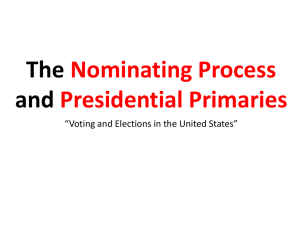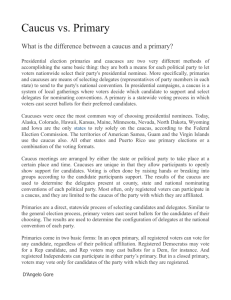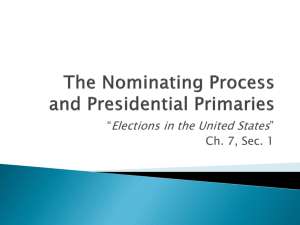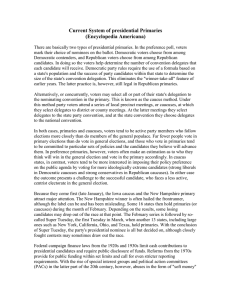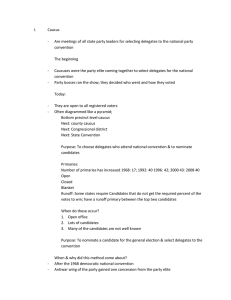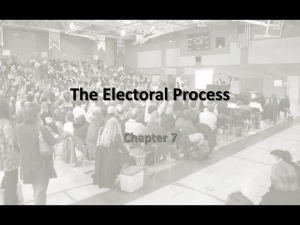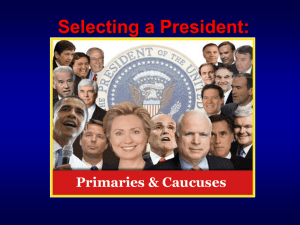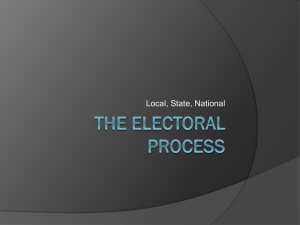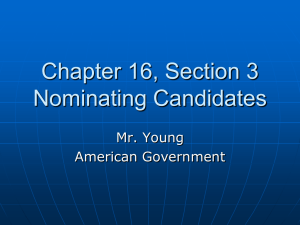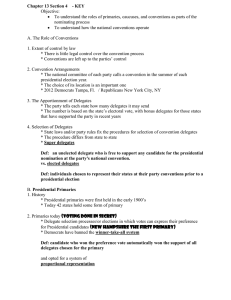THE PRIMARIES
advertisement
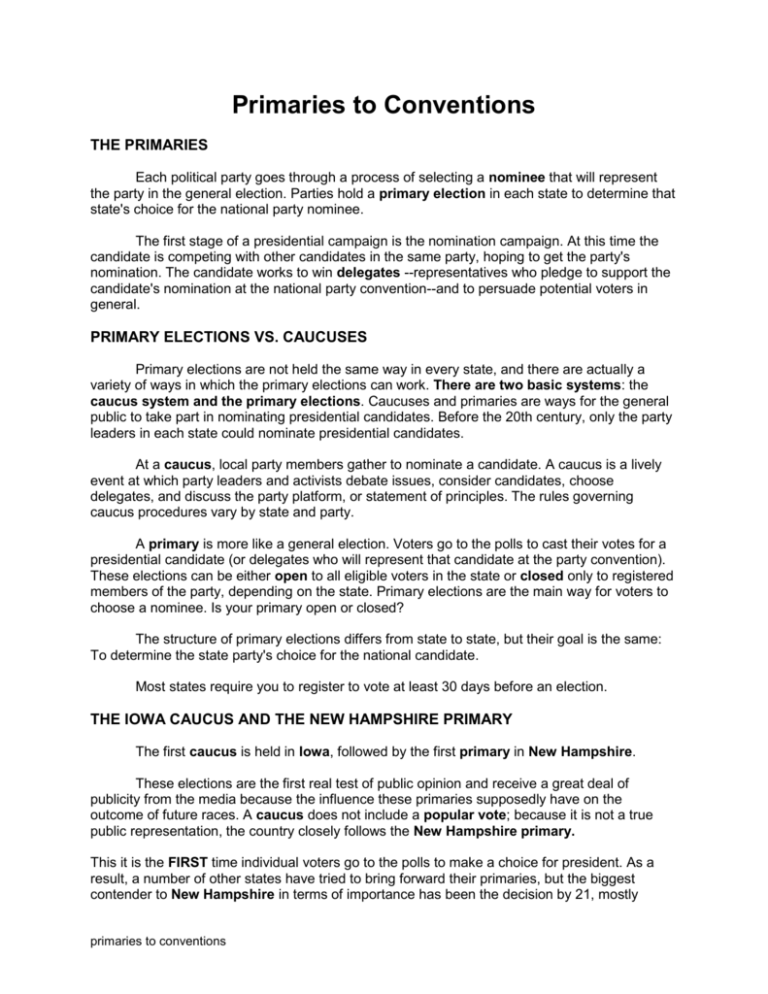
Primaries to Conventions THE PRIMARIES Each political party goes through a process of selecting a nominee that will represent the party in the general election. Parties hold a primary election in each state to determine that state's choice for the national party nominee. The first stage of a presidential campaign is the nomination campaign. At this time the candidate is competing with other candidates in the same party, hoping to get the party's nomination. The candidate works to win delegates --representatives who pledge to support the candidate's nomination at the national party convention--and to persuade potential voters in general. PRIMARY ELECTIONS VS. CAUCUSES Primary elections are not held the same way in every state, and there are actually a variety of ways in which the primary elections can work. There are two basic systems: the caucus system and the primary elections. Caucuses and primaries are ways for the general public to take part in nominating presidential candidates. Before the 20th century, only the party leaders in each state could nominate presidential candidates. At a caucus, local party members gather to nominate a candidate. A caucus is a lively event at which party leaders and activists debate issues, consider candidates, choose delegates, and discuss the party platform, or statement of principles. The rules governing caucus procedures vary by state and party. A primary is more like a general election. Voters go to the polls to cast their votes for a presidential candidate (or delegates who will represent that candidate at the party convention). These elections can be either open to all eligible voters in the state or closed only to registered members of the party, depending on the state. Primary elections are the main way for voters to choose a nominee. Is your primary open or closed? The structure of primary elections differs from state to state, but their goal is the same: To determine the state party's choice for the national candidate. Most states require you to register to vote at least 30 days before an election. THE IOWA CAUCUS AND THE NEW HAMPSHIRE PRIMARY The first caucus is held in Iowa, followed by the first primary in New Hampshire. These elections are the first real test of public opinion and receive a great deal of publicity from the media because the influence these primaries supposedly have on the outcome of future races. A caucus does not include a popular vote; because it is not a true public representation, the country closely follows the New Hampshire primary. This it is the FIRST time individual voters go to the polls to make a choice for president. As a result, a number of other states have tried to bring forward their primaries, but the biggest contender to New Hampshire in terms of importance has been the decision by 21, mostly primaries to conventions Southern, states to hold their primaries on the same day, in what has become known as "Super Tuesday," held on the second Tuesday of March in a general election year. THE NATIONAL CONVENTIONS After the primaries, each party holds a national convention. Each state is represented by delegates. The main purpose of a national party convention is to unify party members behind the party's platform and to nominate candidates for president and vice president. At each convention, after a credentials committee seats the delegates, a permanent chairman is elected. The convention then votes on a platform, drawn up by the platform committee. By the third or fourth day, presidential nominations begin. The chairman calls the roll of states alphabetically. A state may place a candidate in nomination or yield to another state. Voting proceeds again by an alphabetical roll call of the states after all nominations have been made and seconded. A simple majority is required in each party, although this may involve many ballots. The process of awarding the delegates is quite complicated. In most cases, delegates cast their vote for the candidate that their state voted for in their primary, but they are not required to. The candidate who has majority support amongst the delegates at the national convention wins the party's backing for the presidential nomination. TERMS AND DEFINITIONS Delegates Every state divides itself into smaller territories known as districts. Political parties situate themselves in every district in America. These smaller groups elect officials known as delegates to represent the district during a national convention. Platform A political party forms a platform to showcase the issues that they feel the American people should care most about. Platforms tend to highlight the policies and beliefs of those candidates who win or can substantially prove that they have a large following. Majority A majority vote means to retain at least 51% of the votes counted. Plurality This occurs when there is not a clear majority winner. The winner is chosen through percentages of the popular vote. primaries to conventions

